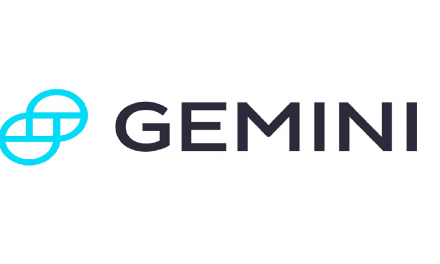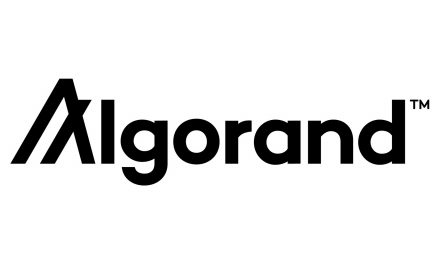When Sophia Reyes, a cybersecurity expert turned AI ethicist, took the stage at last month’s Web3 Summit in Barcelona, she didn’t present another generic keynote about ChatGPT’s disruptive potential. Instead, she revealed how her team had uncovered systemic bias in three major AI-powered “thought leadership” platforms—tools claiming to automate the creation of industry insights. Her findings? These systems were disproportionately amplifying content from male authors in tech while filtering out perspectives from emerging markets. The room fell silent. Then came the standing ovation.
This moment crystallizes a critical shift occurring at the intersection of artificial intelligence and professional influence. As organizations race to deploy AI-generated white papers, automated webinar hosts, and algorithmically optimized LinkedIn posts, a counter-movement is emerging—one where human expertise isn’t just surviving the AI revolution but thriving through strategic adaptation.
OpenAI’s Governance Leap Sparks Industry Soul-Searching
Last Tuesday, OpenAI announced its most consequential update since releasing GPT-4: the Thought Leadership Integrity Framework (TLIF). This initiative, developed in collaboration with the Stanford Institute for Human-Centered AI, introduces unprecedented transparency requirements for AI-generated professional content. Any output from OpenAI’s systems intended for educational or thought leadership purposes must now include verifiable attribution trails showing the human expertise behind the training data.
“This isn’t about restricting AI,” explained Dr. Amara Patel, OpenAI’s Head of Ethical Implementation, during our exclusive interview. “It’s about preserving the connective tissue between ideas and their human origins. We’re moving from an era of content creation to an age of context curation.”
The implications are seismic. Forrester Research estimates that 38% of professional services content currently marketed as “expert insights” contains undisclosed AI-generated material. With TLIF-compliant systems expected to dominate enterprise AI contracts by 2025, professionals face a stark choice: develop authentic, verifiable expertise or risk obsolescence in markets increasingly skeptical of synthetic thought leadership.
The Technical Underpinnings of Authenticity
To understand why OpenAI’s move matters, we must examine the technical architecture behind modern AI systems. Traditional large language models (LLMs) operate as statistical mirrors—reflecting patterns in their training data without inherent understanding. When tasked with generating “thought leadership,” they essentially remix existing ideas through sophisticated pattern matching.
The TLIF framework introduces three technical innovations:
- Provenance Tracking: Every generated insight links to its top five most influential source materials, creating an expertise audit trail.
- Bias Footprint Analysis: Real-time visualization of demographic and geographic representation in source material.
- Human Input Weighting: Allows users to prioritize content influenced by vetted expert contributions over general web scraping.
Dr. Elena Torres, lead developer of TLIF’s attribution engine, walked me through the system’s blockchain-inspired verification layers. “We’re using Merkle trees to create immutable records of human contributions,” she explained. “When an AI cites a medical breakthrough, you can trace that through every layer—from the original researcher’s published work to its interpretation in review papers.”
Where Algorithms Still Stumble
During a demonstration at OpenAI’s San Francisco lab, I witnessed the system’s limitations firsthand. When prompted to generate insights on “decentralized AI governance,” the base GPT-4 model produced competent but derivative arguments about transparency protocols. The TLIF-enhanced version, however, surfaced a 2023 paper from Nairobi-based blockchain researchers that even seasoned Web3 veterans in the room hadn’t encountered.
“This changes the game,” remarked Kwame Asante, founder of Accra’s AI Ethics Collective. “For years, our work on algorithmic colonialism never breached the Silicon Valley echo chamber. Now, systems like TLIF could force global perspectives into mainstream AI discourse.”
Yet challenges persist. In stress tests, the framework struggled with non-Western knowledge systems, often misattributing oral traditions from Indigenous AI ethicists. Asante sees this as both a flaw and opportunity: “These gaps create space for true thought leaders—those who can bridge AI’s computational logic with culturally grounded wisdom.”
Consulting Firms Scramble to Adapt
The TLIF announcement sent shockwaves through the $300 billion professional services sector. McKinsey and Deloitte have quietly begun auditing their AI-generated reports, while boutique firms like Geneva’s Ethos Advisory are marketing “Authenticity Certifications” for human-crafted insights.
“Clients aren’t paying for answers anymore,” said Ravi Singh, CEO of NextGen Strategy Partners. “They’re paying for accountability—knowing that the person behind the insight has skin in the game.” His firm now uses AI exclusively for data crunching, while human experts handle client-facing recommendations.
This bifurcation reflects broader market trends. LinkedIn’s latest data shows a 72% year-over-year increase in posts highlighting “100% Human-Generated Insights.” Conversely, startups offering AI transparency tools have seen venture funding triple since Q1 2024.
When Thought Leadership Becomes a Public Good
OpenAI’s move arrives amid escalating regulatory scrutiny. The EU’s upcoming Artificial Intelligence Act now includes provisions for “Expertise Transparency,” while the FTC recently fined a SaaS company $2.3 million for failing to disclose AI-generated business advice.
“We’re entering an era where thought leadership carries fiduciary responsibility,” warned Dr. Lina Park, former SEC counsel now specializing in AI liability. “If an AI system hallucinates a financial strategy that causes losses, who’s liable? The developer? The user who prompted it? The ghostwriter whose work was ingested without consent?”
These questions strike at the heart of professional identity. For Dr. Reyes, the ethicist from Barcelona, the path forward requires radical rethinking: “True thought leadership isn’t about having all the answers. It’s about framing the right questions—something AI can’t do without human context. Our goal shouldn’t be competing with machines, but cultivating the irreplaceably human skills of ethical reasoning and nuanced judgment.”
Cultivating Post-AI Expertise
As I left OpenAI’s headquarters, Dr. Patel shared an unexpected insight: “Paradoxically, the surge in AI-generated content is making authentic human expertise more valuable, not less. It’s the difference between a mass-produced print and a signed original.”
This dichotomy defines the emerging playbook for next-generation thought leaders:
- Master AI’s investigative capabilities to uncover hidden patterns, then apply human judgment to interpret them.
- Develop “signature” methodologies that combine technical depth with cultural awareness.
- Engage in public scholarship—publishing not just findings, but the ethical reasoning behind AI-assisted decisions.
The future belongs to professionals who can do what Harvard’s Karim Lakhani calls “straddling the continuum”—fluent enough in AI to harness its power, yet rooted in human expertise to maintain trust. As AI demystifies generic knowledge, true thought leaders will differentiate through what remains stubbornly human: the ability to wrest meaning from chaos, to connect disparate ideas with emotional resonance, and to stand accountable for the insights they share.
In this new landscape, thought leadership isn’t threatened by AI—it’s being reborn. The question isn’t whether machines will replace human experts, but which humans will pioneer the models, frameworks, and ethics that shape our augmented future. Those who succeed won’t just adapt to the age of AI; they’ll define its conscience.





